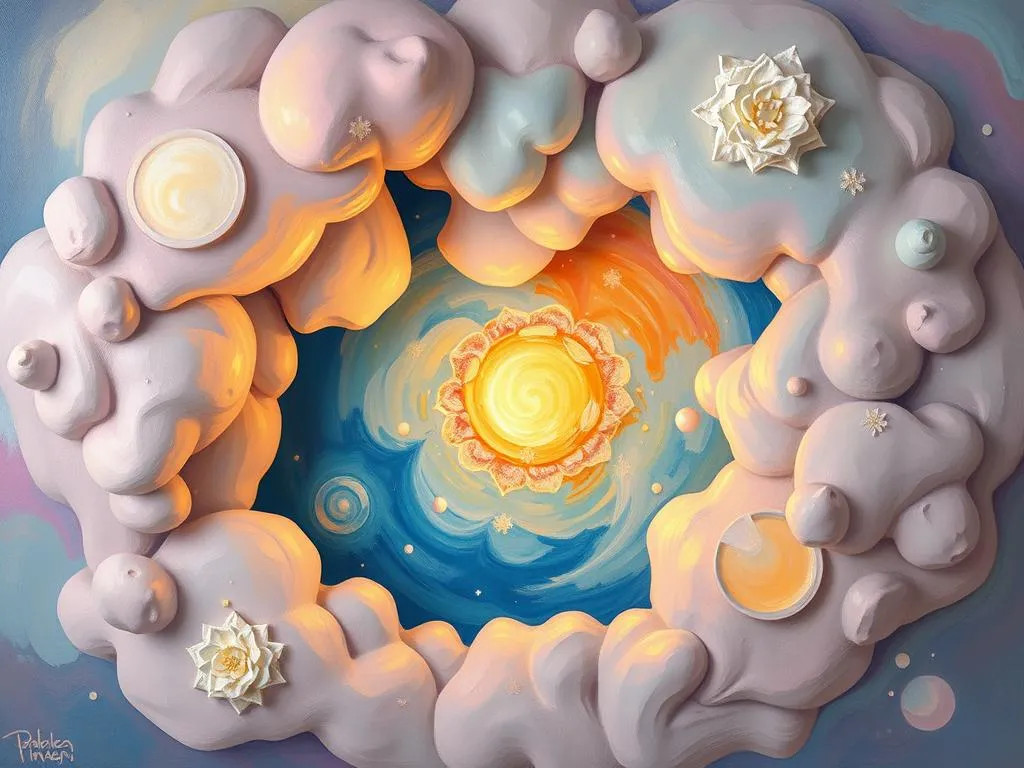
Introduction
Dreams have long fascinated humanity, often providing a window into our subconscious mind. They can be vivid narratives or fleeting images, and they often leave us with a lingering sense of curiosity upon waking. Among these enigmatic experiences, dreams that revolve around symbols hold a particular intrigue. These symbols can represent our emotions, desires, fears, and experiences, weaving complex narratives that transcend mere imagination. Understanding the significance of these symbols can offer profound insights into our waking lives and emotional states.
In this article, we will delve into the symbols that frequently appear in dreams, particularly focusing on their pull significance—a term that refers to the psychological and emotional weight that these symbols carry. Through analysis and reflection, we will explore how these symbols can illuminate aspects of our daily existence, shedding light on untapped potential or unresolved issues.
Symbolism and Meaning
The world of dreams is rich with symbolism. Each symbol can hold multiple meanings that vary based on personal experiences and cultural contexts. For instance, a common symbol found in dreams is water. Water often represents emotions, the unconscious mind, or the flow of life. Dreaming of a calm ocean may suggest emotional tranquility, while turbulent waters might indicate inner turmoil.
Another prevalent symbol is the house, which often signifies the self. Each room can represent different facets of one’s personality or stages of life. For example, dreaming of a basement might indicate repressed memories or fears, while an attic could symbolize aspirations and untapped potential.
Moreover, animals frequently emerge as powerful symbols in dreams. A lion may embody courage and strength, while a snake could represent transformation or hidden fears. The interpretation of these symbols is not fixed; it can shift dramatically depending on the individual’s context and emotional state.
In analyzing symbols, it’s essential to consider the cultural significance as well. For example, while a butterfly might symbolize transformation and hope in one culture, it may represent fragility in another. Thus, understanding the nuances of symbolic meaning is crucial for accurate interpretation.
Additionally, the emotional charge that a symbol carries in a dream can greatly influence its interpretation. For instance, if a dreamer feels fear while encountering a particular symbol, it may indicate unresolved issues related to that symbol in their waking life. Conversely, feelings of joy can suggest acceptance and a positive relationship with that symbol.
Key Scenarios and Variations
Dreams are highly personal and can vary significantly from one individual to another. The way a symbol manifests in a dream can dramatically alter its interpretation. For instance, if one dreams of flying, the experience of flight can evoke feelings of freedom and empowerment. However, if the dreamer feels scared or out of control while flying, it may suggest feelings of anxiety or a struggle for control in their waking life.
Consider the scenario of being chased in a dream. This common theme often symbolizes avoidance. If the pursuer is a known figure, it may represent a specific issue or person the dreamer is avoiding. On the other hand, if the pursuer is an unknown entity, it could symbolize a broader sense of anxiety or fear about the future. This variation highlights how the context and emotional response to the dream can provide deeper insights into the dreamer’s psyche.
Another fascinating variation involves dreams about loss or abandonment, which can manifest differently depending on the dreamer’s current life circumstances. Dreaming of losing a loved one might indicate a fear of separation or anxiety about the future of that relationship. Alternatively, it might reflect the dreamer’s feelings of neglect or insecurity in their waking life.
Similarly, dreams about success or failure can reveal much about one’s self-esteem and aspirations. Dreaming of achieving a long-desired goal can signify confidence and motivation, while dreaming of failure, especially in a high-stakes scenario, may indicate self-doubt or fear of judgment.
These variations underscore the importance of context and emotional resonance in dream interpretation. As readers reflect on their dreams, considering these elements can lead to a more nuanced understanding of their inner conflicts and desires.
Real-Life Connections and Takeaways
Dreams can serve as a mirror to our waking lives, revealing our innermost thoughts and feelings. To connect dream symbols to real-life situations, one must engage in self-reflection. Journaling about dream experiences can provide clarity, allowing individuals to track patterns in their dreams over time. Not only does this practice enhance dream recall, but it also creates a tangible connection between the dream world and waking life.
For example, if one consistently dreams about being unprepared for an exam or a performance, it may reflect feelings of inadequacy or fear of failure in their professional life. Acknowledging these feelings can empower the dreamer to confront their insecurities, whether by seeking additional training or addressing emotional barriers.
Additionally, it can be beneficial to explore one’s emotional responses to dream symbols. If a dream about water evokes feelings of peace, it may be worth exploring how those emotions can be incorporated into daily life. Perhaps it suggests a need for more relaxation or a connection to one’s emotions. On the other hand, if turbulent water elicits distress, it may be an invitation to confront unresolved feelings or conflicts.
Moreover, engaging with the imagery of dreams can also lead to creative insights. Many artists, writers, and innovators have drawn inspiration from their dreams. By cultivating a deeper awareness of one’s dreams, individuals may discover new avenues for creativity and personal expression.
In conclusion, the exploration of dream symbols and their pull significance can be a transformative journey. By analyzing common symbols, considering variations in dream scenarios, and making connections to real-life experiences, readers can gain valuable insights into their emotional landscapes. Dreams, after all, are not just random images but profound narratives that can guide us toward greater self-awareness and fulfillment.
As you reflect on your own dream experiences, consider the symbols that stand out. What emotions do they evoke? How might they relate to your waking life? By engaging with these questions, you can unlock the rich tapestry of meaning that dreams offer, ultimately leading to personal growth and deeper understanding.







